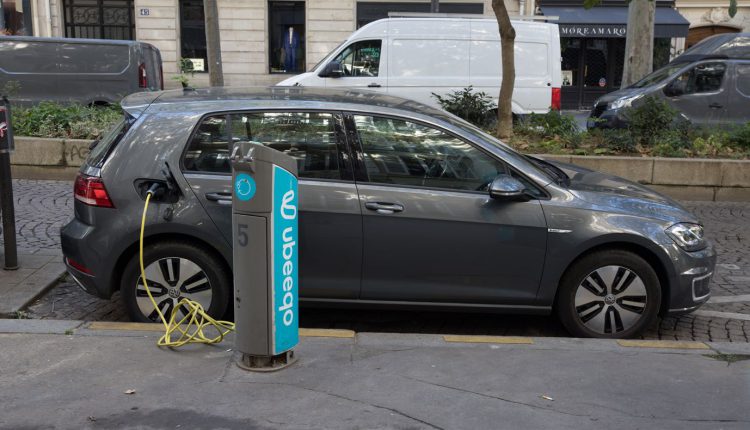The hard route towards vehicle electrification and decarbonization
El arduo camino hacia la descarbonización y electrificación de vehículos
Isabel Morán (1), Rubén González (2), José García Cascallana (3), Xiomar Gómez (3)
Resumen
El impulso hacia la electrificación de los turismos para lograr el ambicioso objetivo de descarbonizar el sector del transporte es comprensible, dadas las preocupaciones en torno al impacto del cambio climático. Sin embargo, este enfoque conlleva un elevado riesgo de producir consecuencias económicas no deseadas, aumentando potencialmente las emisiones globales de carbono y creando una crisis ambiental debido a la extracción de componentes críticos. El sector de fabricación de automóviles ha mejorado enormemente la eficiencia y ha reducido las emisiones contaminantes. Los motores actuales de gasolina y diésel están equipados con varios dispositivos para reducir la contaminación y alcanzar una gran eficiencia, lo que se traduce en un menor consumo de combustible. La hibridación permite más disminución de la demanda de combustible, ya sea mediante el uso de baterías o mediante el uso de combustibles gaseosos como los gases licuados del petróleo (GLP) o el gas natural comprimido (GNC). Los vehículos eléctricos híbridos enchufables pueden ayudar en la transición hacia la electrificación total de transporte y, al mismo tiempo, ser una excelente opción al combinar los beneficios de las tecnologías térmica y eléctrica. El presente manuscrito muestra una visión general de las tecnologías actuales disponibles en los turismos y ofrece un análisis crítico sobre la penetración de los vehículos eléctricos.
Palabras clave Motores térmicos, hibridación, gases combustibles, vehículo eléctrico, baterías.
Abstract
The pressure set towards electrifying passenger cars in order to achieve the ambitious goal of decarbonizing the transport sector is understandable, given the concerns around the impact of climate change. However, this approach carries a high risk of producing unintended economic consequences, potentially increasing global carbon emissions, and creating an environmental crisis due to the mining of critical components. The car manufacturing sector has greatly improved efficiency and reduced pollutant emissions. Current gasoline and diesel engines are equipped with several devices to reduce pollution and attain high efficiency. This results in lower fuel consumption. Hybridization allows a further decrease in fuel demand, either by the use of batteries or by using gaseous fuels such as liquid petroleum gases (LPG) or compressed natural gas (CNG). Plug-in hybrid electric vehicles may aid in the transition to a fully electrified transport sector while being an excellent choice by combining benefits from thermal and electric technologies. The present manuscript shows an overview of current technologies available in passenger cars and gives a critical analysis regarding the penetration of electric vehicles.
Keywords Thermal engines, hybridization, gaseous fuels, electric vehicle, batteries.
Recibido/received: 09/05/2024 Aceptado/accepted: 05/06/2024.
(1) Student of Degree in Business Administration and Management – Data Analytics. Campus Universitario de Pamplona, University of Navarra, 31009 Pamplona, Spain.
(2) Department of Electrical, Systems and Automatic Engineering, School of Industrial, Computer and Aeronautical Engineering, Campus de Vegazana, University of León, 24071 León, Spain.
(3) Department of Chemistry and Applied Physics, Chemical Engineering Area, Campus de Vegazana s/n, University of León, 24071 León, Spain.
Corresponding author: Xiomar Gómez Barrios; e-mail: xagomb@unileon.es
Introduction
The concerns regarding greenhouse gases’ effect on global climate have set the focus of different research activities in providing alternatives for using renewable sources and intensifying the use of alternative fuels. The decarbonization of the economy has become a challenge to the scientific community and a concern to the industrial sector since it brings along several restrictions and, in some cases, an extreme increase in cost production. If we want to apply this concept to the industrial sector, we would need to consider some additional factors besides the current state of the approach. These factors include its impact on energy demand, the quality of materials and logistics, the cost of recycled materials, the availability, and reliability of renewable energy sources, among others. Another important consideration is how consumers perceive a product with a significantly higher price.
One aspect causing controversy is the political pressure to accelerate the electrification and decarbonization of the transport sector, along with the restrictions associated with passenger cars and heavy-duty vehicle emissions. The implementation of the Euro 7 regulation has been delayed. This regulation sets stricter limits for buses and heavy-duty vehicles, establishes new measures to reduce emissions from tires and brakes, life of batteries, and complements CO2 emission standards and air quality legislation (www.europarl.europa.eu). The standby period will give additional time for car manufacturers and heavy-duty vehicles to adapt to more stringent standards. We must carefully evaluate the simplistic approach of considering that restricting emissions and setting stricter limits above those already covered by Euro 6 may significantly improve air quality and prevent a high number of premature deaths.
The implementation of stricter norms will only apply to new vehicles, which, in the end, would raise the car selling price because of the increase in costs associated with adding emission abatement devices and the use of other materials. For example, Spain’s average age of passenger cars is one of the oldest in the European Union (13.5 years). However, in 2007, the age was about eight years, a symptom of current difficulties in acquiring new vehicles for the population. In addition, light passenger cars with environmental classification as B represent 64.7% of the vehicle fleet but are responsible for more than 90% of particle and NOx emissions (https:// anfac.com). Applying new restrictions would have a minor impact since only a small proportion of circulating vehicles would comply with this standard. In contrast, the risk that the vehicle fleet would get even older (the so-called “Havana effect”) is a possibility that deserves careful assessment.
Electrification of the vehicle fleet may seem feasible for some specific city characteristics and population dynamics. Large and crowded cities with a high population density concentrated in small areas may consider urgent the need to limit the circulation of the most contaminating vehicles and even restrict the circulation to any private passenger cars in favour of public transport due to the excessive recurrence of traffic jams. However, this may not be the case in some other cities with a lower population density.
In line with the Declaration of Climate Emergency, the integrated National Energy and Climate Plan 2021- 2030 and the National Air Pollution Control Program, the Climate Change and Energy Transition Law establishes that Spanish municipalities with more than 50,000 inhabitants, island territories, and municipalities with more than 20,000 inhabitants, as long as pollutant limit values are exceeded (regulated in Royal Decree 102/2011, of January 28, relating to the improvement of air quality), must adopt before 2023, sustainable urban mobility plans that introduce mitigation measures for reducing emissions derived of mobility including, among others, the establishment of low-emission zones (www.miteco.gob. es). Figure 1 shown a typical parking lot.
The aims of low-emission zones are the following: improving air quality and the health of citizens, contributing to the mitigation of climate change, the modal shift towards more sustainable modes of transport, promoting energy efficiency in the use of transport means (www.miteco.gob.es). In general terms, circulation and parking of vehicles on public roads are then allowed to those having an environmental classification denoted as “0” for electric cars and “ECO” for hybrid and liquid petroleum gases (LPG) or compressed natural gas (CNG) vehicles. Vehicles classified as “C” (diesel and gasoline vehicles with high efficiency, fuel economy and pollutant reduction devices) and “B” (diesel and gasoline vehicles registered between 2006 and 2015 and between 2001 and 2015, respectively) have access granted but must park in a public parking. The rest of the vehicles have no classification, since they do not comply with any type of anti-pollution regulation (neither Euro 3, Euro 4, nor Euro 5) and, therefore, access is denied. In addition, adapting C-type category vehicles to run with LPG is also possible, with this latter option becoming more affordable for many citizens as a way to obtain the “ECO” classification (Fig. 2). Therefore, there are several options to fulfil restrictions associated with these areas. However, greater efforts are being set by public administrations in favour of electric vehicles, when the aims established may be achieved by increasing the proportion of any of these vehicles in the Spanish fleet.
Car manufacturers have conducted extensive research to improve fuel economy and increase engine efficiency. The European car fleet has reduced average fuel economy by 36% from the period between 1975 and 2015, and this greater fuel efficiency has been achieved by simultaneously increasing average vehicle weight and producing more powerful engines (Hu & Chen, 2016). It is important to remember that the time frame for meeting environmental objectives is relatively short. Therefore, the most efficient technologies with higher maturity and easier deployment at a lower cost should be selected to achieve the ambitious goal since they will be able to cover a greater percentage of target drivers. Factors such as people’s incomes, lifestyle, transport costs, and the impact of different measures adopted on the economy also need to be carefully evaluated.
The present manuscript aims to describe the different technologies available in passenger cars for reducing emissions and fuel consumption and give a critical view regarding the intensive pressure set in favour of electrification.

1. Diesel engine cars
Diesel engine vehicles are currently provided with different engine devices to attain low pollutant emissions and they are the most efficient systems developed in the transport sector since they use a fuel with an extremely high density (42.65 MJ/kg) (Campos-Fernández, et al., 2012). Diesel engines are a type of compression ignition engine; thus, the combustion process occurs once air compression is attained and after fuel injection, avoiding pre-ignition problems and allowing operation at higher compression ratios. Ignition occurs spontaneously, thanks to the high heat achieved during the compression stage. This process allows for high combustion efficiency and better performance under different engine loads thanks to a perfect regulation of the amount of fuel injected. Due to the high-pressure conditions, they must endure and the lower rpm at which they work, these engines are considered more reliable and efficient (Crosse, 2019; Houghtlen, 2019). Figure 3 shows Seat Ateca model with 2.0 TDI engine.
The higher pressure achieved during the combustion event requires diesel engines to have a robust construction, so they can stand for mean effective pressure values (MEP) of 20 to 30 bars and peak maximum pressure (Pmax) of about 180-200 bars (Eilts, et al., 2013). Therefore, these engines are inherently more expensive to build than gasoline engines. In addition, the higher temperature achieved, because of the diffusive mode of operation, requires additional measurements intended for reducing pollutant emissions such as nitrogen oxides, particles, unburned hydrocarbons and carbon monoxide. The installation of different devices to comply with emission limits is another factor that increases the costs of these engines, although durability more than compensates for the higher price.
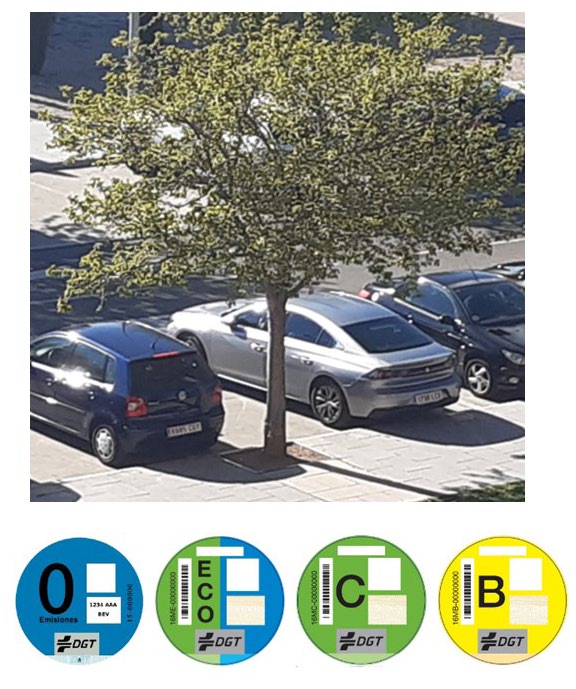
Current diesel engines are designed to increase fuel efficiency and reduce NOx production. Exhaust gas recirculation (EGR) is an old strategy employed for reducing combustion temperature. The emission of NOx is associated with two mechanisms; one is called the Zeldovich pathway (thermal mechanism), where high temperatures are needed to decompose the triple bond of the nitrogen molecule and give the oxidized form. The other mechanism of NO formation takes place at lower temperatures and is known as the Fenimore route (prompt NO formation). In this second pathway, the presence of hydrogen cyanide (HCN) plays a main role, and the reactions involved have lower activation energy. Thus, being this route responsible for NO emissions at lower temperatures (Yoshikawa, et al., 2009). The introduction of exhaust gases into the combustion chamber exerts a dilution effect and acts as heat sink, lowering peak combustion temperatures. However, the benefits of NO abatement come along with incomplete combustion, increasing particles, CO and unburned hydrocarbon emissions. Therefore, different technological devices have been developed to minimize their emission.
Diesel engines are equipped with filter devices and catalytic reactors capable of removing most of the contaminants that are a cause of concern. Diesel particles are composed mainly of carbon, minerals and soluble compounds derived from the fuel itself and the lubricant (Guan, et al., 2015). It is important to note that not only the number of particles produced should be monitored, but also their size, with the smallest one being more harmful to humans; for this reason, diesel engines incorporate diesel particle filters (DPF) that allow compliance with Euro 6 and future Euro 7 regulation which set stricter emission standards. DPF allows retaining most of the small particles and it is equipped with mechanisms to avoid filter clogging.
Filter devices force exhaust gases to pass through a porous material to retain soot particles physically. Two regeneration mechanisms avoid filter clogging. Passive regeneration takes place when the car is normally driven. When the engine temperature is above 350 °C, soot particles retained in the filter are burned off. Active regeneration is initiated when soot levels reach 45%. Thus, the engine sends a signal for fuel injection into the diesel oxidation catalysts, burning off trapped particles (www.valvolineglobal.com).
The diesel oxidation catalyst is a specially designed catalytic converter capable of oxidizing carbon monoxide, unburned hydrocarbons and soluble organic fractions present in diesel particles into CO2 . The reactor also participates in the reduction of NO by initially oxidizing this molecule, which is further reduced into N2 at a later stage (www.nettinc.com; Kim, et al., 2011). Catalyst materials are mainly noble metals like palladium (Pd), platinum (Pt) and rhodium (Rd). The configuration of the catalytic converter is usually a square cross-section with open ends and located in a parallel position to the exhaust gas flow to provide minimum pressure drop (Ayodhya & Narayanappa, 2018). The Euro 6 regulation considers lean NOx traps and selective catalytic reduction for controlling NOx emissions (Liuhanzi, et al., 2015). Toyota introduced lean NOx in the 1990s. This device operates in alternative cycles, where NOx is absorbed during lean operating conditions and reduced when fuel-rich operating conditions are reached, transforming the pollutant into N2 (Miyoshi, et al., 1995).
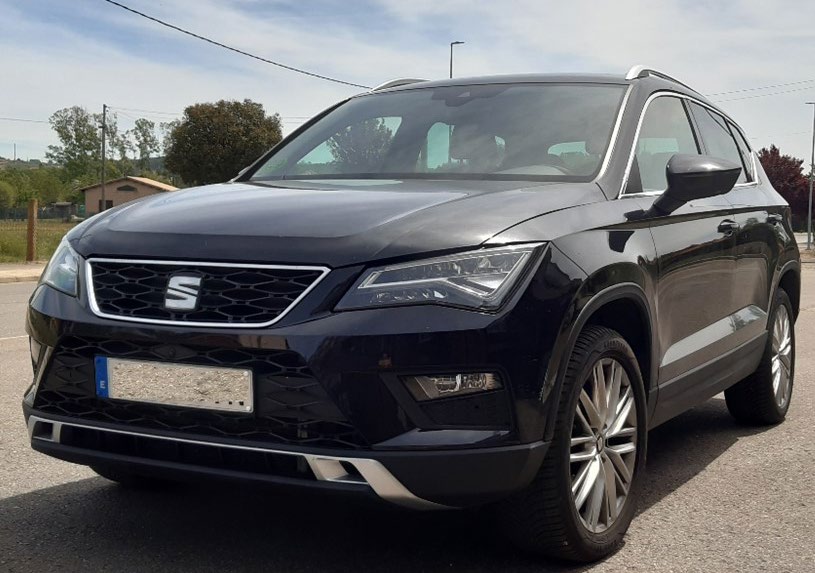
When considering the effect of diesel particles on human health, it is essential to clearly differentiate between raw exhaust gases and those obtained after a filtering post-treatment (Weitekamp, et al., 2020). In addition, the air quality of cities is also affected by residential and commercial heating systems. Therefore, the impact of particles on human health should consider the type of house heating systems in cities and lifestyle habits in addition to those emissions derived from the transport sector. Improve air quality measures must also focus on transforming old house heating systems based on coal and avoiding using biomass open fireplaces and open log stoves, which do not contain any filter devices (IEA, 2018).
Renewing the old diesel passenger car fleet with current diesel vehicles with advanced pollutant control devices will significantly improve air quality and reduce CO2 emissions. However, the price of these vehicles has increased drastically due to the inclusion of safety driving measurements, emission control systems, and the increase in raw material prices (Lacort & de la Torre, 2023). Therefore, to attain a significant impact and persuade possible clients, an aggressive campaign with the availability of financial aids needs to be implemented since another factor that refrains the acquisition of a new passenger car is the impoverishment effect that inflation has recently caused. The second-hand market is also an excellent ally for renewing the diesel vehicle fleets, allowing clients to get rid of their old diesel engines and acquire a vehicle that is a few years old but contains all necessary emission control devices at an excellent price.
2. Spark ignition engines
Spark ignition engines are the most widely used engines in passenger cars. Traditional engines are characterized by the admission of a mixture of fuel and air through the inlet valves. The mixture is then compressed until the cylinder reaches the top dead centre position, requiring a spark to start the ignition process. It is then important to avoid premature combustion during the compression stroke; thus, fuels are required to have good anti-nocking characteristics. The octane index (OI) is used to characterize the knocking behaviour of a fuel. The higher the OI, the better the anti-nocking performance. Additives such as ethanol, methyl terbutyl ether, ethyl terbutyl ether, and methanol are frequently used worldwide to improve resistance to nocking during the compression stage.
Modifications in fuel injection techniques have been implemented to increase fuel economy. Low load operating conditions cause high fuel consumption because the throttle valve is partially open under these circumstances, causing flow restrictions. Therefore, a pressure change is experienced, leading to partial vacuum formation, which the engine must overcome. This event gives rise to pumping losses, which are higher at idle conditions or when throttle openings are small and being also responsible for increased fuel consumption. Other factors associated with fuel economy are the air-fuel mixture’s lower density at low load conditions and increased heat transfer.
Strategies that enable increasing fuel economy are associated with the stratified injection of fuel and cylinder deactivation. Changes in the way fuel is introduced into the cylinder were established to improve fuel use efficiency. Two examples of these strategies are homogenous charge compression ignition (HCCI), in which the mixture enters the cylinder achieving a full homogenous state before autoignition, and premixed charge combustion ignition (PCCI), where a partial premix is created, allowing for fuel stratification before combustion. Thus, this concept may be classified as between conventional combustion and HCCI (Liang, et al., 2019).
Mazda presented in 2021 commercialization of the e-SKYACTIVE-X (2.0 L) engine with a fuel consumption of 6.5-5.0 L/100 km (WLTP cycle) capable of developing 186 HP at 6,000 rpm (Mazda CX-30 model). SKYACTIVE-X takes both advantages of diesel and spark ignition engines by applying a higher compression ratio to a very lean fuel-air mixture and applying a spark to a small dense amount of fuelair mixture, allowing the rise of temperature and pressure. Thus, combustion propagates under high-pressure conditions at higher flame speed resembling the process taking place in a conventional diesel engine (www.mazda.com). In contrast to other car manufacturers, this engine significantly reduces fuel consumption despite its high volumetric size.
One operating principle that is now extensively used and allows for reducing fuel consumption is the direct injection of gasoline fuel into the cylinder. The common rail injection system was commercialized by Bosch company (developed by collaboration between Magneti Marelli, Centro Ricerche Fiat, and Elasis [www.eurodiesel.com]). After research and development by Fiat Group, it was used in automobiles in the 1990s, initially for diesel engines and posteriorly adapted to gasoline engines (Kristensen, 2022). The direct injection of fuel into the cylinder allowed for better combustion performance, thus reducing emissions and increasing fuel efficiency. However, several challenges needed to be overcome, such as spark plug fouling problems, dilution of lubricating oil, and soot emission deposit, among others (Iwamoto, et al., 1997). All these problems are now part of the past and were successfully solved. In the case of turbocharged injection systems, the swirling mixture also enhances the cooling of the combustion chamber and aids in avoiding knocking problems (www.audi-technology-portal.de). In addition, new gasoline engines are now equipped with particle filters to avoid soot emissions, just like modern diesel engines.
Recent developments have set the focus on engine downsizing, increasing specific power, and adding hybridization to engines to achieve desired powers and to avoid penalizing fuel economy. However, some other car manufacturers have achieved the desired efficiency aim by keeping standard cylinder volumes. An example of these distinct features is being observed when comparing Hyundai Kona (1.0 L mild hybrid engine T-GDI with 120 HP) and Mazda CX-30 (2.0 L mild hybrid e-skyactive G with 150 HP). Under urban driving conditions, the first one achieved a better result with 6.7 L/100 km, against the value of 7.8 of Mazda. However, the difference is small under highway driving conditions, with Mazda attaining better values (7.2 L/100 km vs. 7.5 L/100 km obtained for Kona). Even more, under economic conduction mode, it is astonishing the better fuel economy of Mazda with a value of 3.9 L/100 km given the size of this engine, whereas the Kona model achieved a value of 4.2 L/100 km (Gemelli, 2023; Gemelli, 2024).
Reducing the number of cylinders from 4 to 3 units is another way of attaining lower-size engines. However, the design and mounting system for a powertrain with a 3-cylinder engine is more challenging (Liu, et al., 2016) since these engines are not as naturally balanced as 4-cylinder ones. One of the first modern car manufacturers to introduce back into the market 3-cylinder engines was Ford with the 1.0 L EcoBoost in 2010 characterized by being a turbocharged direct injection engine with high-efficiency thanks to the capability of variable camshaft timing (Ti-VCT stands for twin independent variable camshaft timing), which changes the opening of intake and exhaust valves in response to load, thus allowing into the cylinders more or less air based on driving conditions (Goldasz, 2016; Tragakis, 2024).
Reducing the size of the engines along with the deactivation of cylinders are two distinctive features that improve engine performance. Cylinder deactivation (CDA) is a well-known and widely spread strategy applied by different car manufacturers to reduce fuel engine demand when operating under low-load conditions, thus improving engine performance by increasing the load of active cylinders. During the load operation, more fuel is used for running the engine itself than for moving the vehicle, causing the efficiency to decrease between 10-15% (Fridrichová, et al., 2021; Baykara, et al., 2017). An example of the CDA technology is the Volkswagen approach, which allows a decrease in fuel consumption of 0.4 L/100 km, increasing to 0.6 L/100 km if the benefits of the start and stop system are added (Fridrichová, et al., 2021). Even small engines such as Ecoboost 1.0 L (Ford) can achieve a fuel economy reduction from 4% to 6% by including CDA technology (Küpper, et al., 2016). Deactivation technology has also been developed for compression ignition engines, in this case, called diesel Dynamic Skip Fire (dDSF®), and also used in Miller-type engines and hybrid vehicles (Ortiz-Soto, et al., 2019).
Engine manufacturers’ efforts have significantly reduced CO2 emissions and pollutant levels (particles and NOx) by installing catalytic converters and particle filters. For this reason, one of the most efficient ways to improve air quality in city centres is by reducing the average age of circulating vehicles. The average age of the European vehicle fleet is currently 12 years (ACEA, 2023). Decreasing the average age of cars would immediately impact global fuel consumption, having a greater impact in developing countries because of their older vehicle fleet (www.globalfleet.com). This measure would be much easier to implement than transforming the whole fleet into an electric type, requiring completely different logistics for battery recharging.
Another important issue is the fact that the population segment with lower incomes may find several difficulties in acquiring a new car due to its higher cost, which has kept increasing due to the inclusion of control emission systems and safety devices. The average age of second-hand vehicles sold in Spain is 11.2 years, with 40.2% of the second-hand market being concentrated in models over 15 years old (De Miguel, 2023). Therefore, a critical measure that may aid in achieving emission targets may be establishing financial aid destined to acquire used vehicles with an average age between 0-5 years, with a much lower price than new cars.
A measure that could have significantly reduced fuel consumption was the hybridization of spark ignition engines using alternative fuels such as CNG. However, the lack of enough governmental support for installing CNG filling stations relegated this option to minimal spreading only in highly populated cities. Seat offered hybridized models using CNG fuel such as (www. castellanamotor.es) Seat Arona, Ibiza and Leon. Models were also available in Audi and Skoda. Although it enjoyed certain advantages regarding tax exemptions in Madrid and Barcelona, the commercial strategy failed due to the lack of support from the different administrations, thus leading the company to remove this technology from its catalogue. The high price of installing a CNG recharging station, which is much higher than that for LPG, aided in the low public acceptance of this technology, even though fuel price was more tentative than that of its LPG homologous. Therefore, the low number of recharging stations created a retrofitted effect for discouraging possible future clients (Couto, 2023).
Fortunately, Skoda keeps its hybridized Octavia model with CNG (www. skoda.es), an excellent alternative for reducing fuel consumption and, therefore, greenhouses gases (GHG) emissions. The lesson learned here is that if administrations consider the economic effort of installing CNG recharging stations unworthy even though this fuel can attain a great reduction in GHG emission, why would anyone then think of hydrogen as a feasible fuel for the transport sector when installations costs associated with recharging stations may be higher, and safety considerations are more critical (www. doverfuelingsolutions.com; www.h2stationmaps.com). Toyota Mirai has been available in the market since 2014, using H2 as fuel, and currently Honda is introducing the CR-V model with a H2 fuel cell. In consequence, if the interest of the administration is to reduce emissions, they have had plenty of time and technological alternatives for supporting the use of H2 as fuel. The disruptive ammonia engine of Toyota is another example of the compromise of car manufacturers in reducing GHG emissions.
Bi-fuel engines using LPG and gasoline have had a better acceptance and a greater number of vehicles are currently using this system. Many car manufacturers offer LPG hybrid vehicles and many car services offer the transformation, with vehicles homologated to Euro 4 onward being allowed to gain the ECO designation. Unless, having the ECO category is enough reason for incurring in the transformation costs. The investment is, usually, only profitable when the engine runs in average more than 30,000 km/year (Mendoza, 2023). The number of recharging stations is much higher than that of CNG. Repsol has more than 400 fuelling points (www.repsol.es/particulares), and some car sellers, such as Dacia, offer an application to find LPG stations (www.dacia.es).
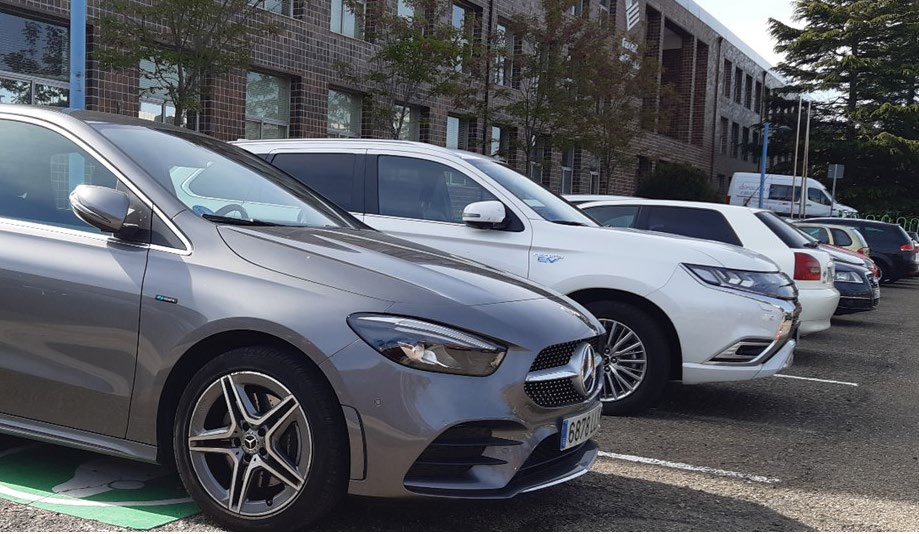
3. Hybrid electric vehicles
The market of hybrid vehicles is extensive, composed of mild hybrid engines having batteries to improve driving performance and highly hybridized systems to offer a spectrum of solutions for different driving needs, thus taking advantage of battery recharging, but also using standard fuels when large autonomy is needed. Toyota Prius was the first hybrid vehicle capable of achieving successful massive commercialization, using a simulated Atkinson cycle by the development of delayed intake valve closing during the compression stroke (Clifford, 2015) and using Nickel-metal hydride batteries that are recharged during cruising mode by the regenerator or by the electric motor during deceleration and regenerative braking (www. markville.com). Lithium-ion batteries are also currently used because they are smaller and lighter, they have a greater capacity for storing energy, and they are very useful for plug-in hybrid electric vehicles.
Different car manufacturers have got into the commercialization of hybrid engines with some of them offering exclusively hybrid configuration in some segments, as it is the case of Nissan Qashqai, which is currently available only as hybrid vehicle using 12 V Liion batteries to aid in propulsion or as e-power. In this later case, the gasoline engine is used exclusively for charging batteries with the electric motor being responsible of propulsion, thus offering a power of 190 HP with fuel consumption of just 5.2 L/100 km, whereas the mild hybrid model with 140 HP reports a consumption of 6.3 L/100 km (www. nissan.com.co) (Fig. 5).
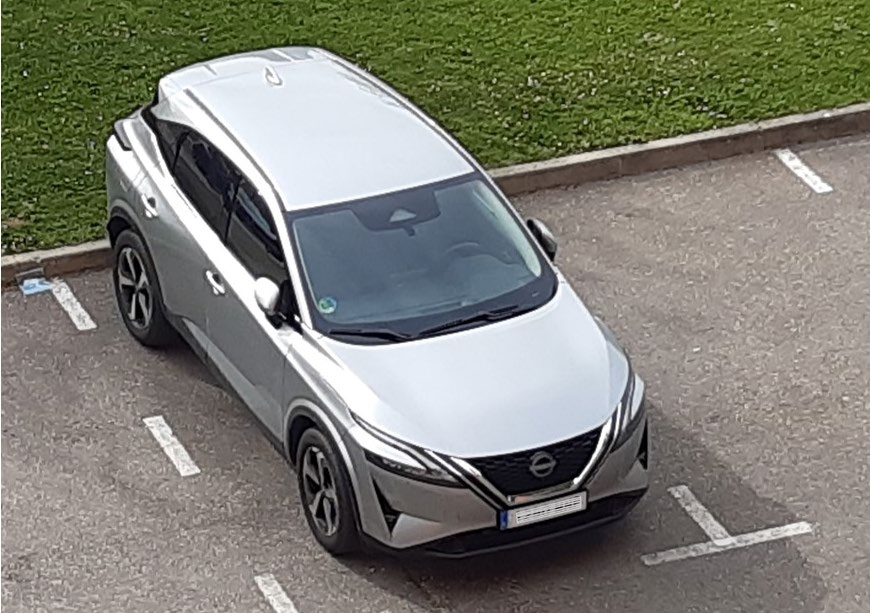
One of the main advantages of using mild hybridization, besides the evident compatibility with the existing network of gas stations, is that public funds are not excessively diverted into financing battery recharging infrastructure and subsidies for buying electric vehicles. Mild hybrid vehicles have a much lower price compared with plug-in hybrid electric vehicles (PHEV) and electric vehicles (EVs), becoming more accessible to possible clients. Therefore, this segment is not being benefited by public aid, even though the public is positively responding to this market. The transition of this technology to developing countries is smoother due to the lack of complex infrastructure associated with refuelling stations and full compatibility with the present one. Another relevant fact is that the size of batteries needed for producing these vehicles is much smaller; thus, a greater number can be manufactured using a lower amount of lithium and other critical metals.
PHEVs combine the advantages of electric vehicles by producing zero dispersed CO2 emissions when running in electric mode, great autonomy, and easy fuel recharging of combustion ones. Even though different administrations set the pressure to increase the share of sales of electric vehicles, PHEVs are positioning better in the market because they eliminate the anxiety factor intrinsic to EV owners struggling to find a charging station before batteries lose full power. In addition, these vehicles eliminate the pressure of diverting public funds to increase the recharging network in a short time since they can perfectly adapt to the existing gas station network. Figure 6 shows a PHEV vehicle connected to a free recharging station.
The increment in sales of PHEVs in the United States was similar to EVs in 2022, but in 2023 the increase in sales was 8.3% against 6.9% for EVs (Wayland, 2023). In the Spanish case, the number of electrified units is growing at a slower rate, with EV representing 4.77% of the market share and PHEV 5.52% (data from January 2024, Lopez-Redondo, 2024). In the case of the electric market, 55% of vehicles sold in January are Tesla, whereas in the case of PHEV, the share is more distributed between different car manufacturers.
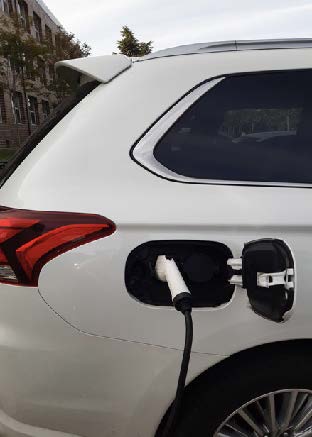
consumption is 2.0 L/100 km (WLTP).
Difficulties in implementing the Moves plans seem to be the reason behind this poor behaviour due to the cumbersome procedures for requesting financial aid and the long execution period until the clients receive the money back. Another important factor is the residual price of the vehicle. Some consumers may be refrained from acquiring a vehicle whose residual price would be much lower due to the presence of batteries. Conventional diesel and gasoline cars have a very active second-hand market. In consequence, if, in need of selling the vehicle, the client may get a return of part of their money, but in the case of EV and PHEV, because of the novelty of these markets, consumers lack enough information regarding the behaviour of the second-hand market and what the price would be for their electric vehicle compared to an equivalent combustion one. This probably explains the trend of consumers renting an EV rather than buying it (Raymunt, 2023).
The fuel consumption of a PHEV is much lower than that of a mild hybrid vehicle when running with charged batteries. As an example, the Toyota RAV4 PHEV, with a combustion engine of 185 HP, has an average electric autonomy of 75 km (one of the highest in the market of PHEVs) and homologates a fuel consumption of 1.0 L/100 km during the first 100 km and 6.6 L/100 km when running with uncharged batteries, which is an extremely low value for a vehicle with 306 HP (www.carwow. es/toyota) (combined engines).
The Spanish subsidy (Moves plan III) for buying this type of vehicle gives a financial aid of 4,500 € or (7,000 € if a used vehicle is returned for scrapping) and tax benefits of around 1,000 € for middle income earners (Royal Decree 266/2021). However, the difference in prices between the PHEV and mHEV type for the case studied is about 8,000 €, after subtracting the financial aid (assuming 38,000 € for mHEV and 51,500 € for PHEV and 15,000 km/year (https://www.toyota.es/coches/rav4)) and to this value, the personal income tax should be added, since any financial aid comes with the necessary payment of taxes. Therefore, only if the vehicle always runs at the lowest fuel consumption range, this difference in price will be compensated by the fuel consumption savings. The additional deduction established in the personal income tax of 15% (up to 20,000 €) of the car price can help shift the balance to the electrification option, but this money is received the year after the vehicle is purchased. Figure 7 shows Toyota RAV4 hybrid version.
A particularly innovative option with excellent fuel consumption is the hybrid system offered by Mercedes combining a diesel engine and batteries. Although someone may argue that complexity of the diesel engines is already high to add an additional hybrid system (Gutiérrez, 2023). The vast experience and reliability of Mercedes ensures good behaviour. This type of hybridization is available in models GLC and GLE where the increase caused by the diesel engine results insignificant, a segment mainly intended to approach high-income clients. The homologated fuel consumption is far better than any of their competitor within the market, with 0.4 L/100 km in WLTP cycle for the GLC 300 model and an autonomy of 127 km in electrical mode, thus having environmental classification of “0” (www.mercedes-benz.es).

Mazda has introduced a ground-breaking idea by integrating its renowned rotary engine into the MX30 R-EV model, with an electrical autonomy of 85 km which is perfect for daily use, whereas the rotary engine produces electricity for long distance trips (www. mazda.es/gama/mazda-mx-30/), thus avoiding the anxiety range problem. An additional feature, which other car manufacturers have also incorporated, is the possibility of recharging the vehicle using a conventional Schucko connector similar to those used by home electric appliances (Fig. 8).
4. Electric vehicles
Sustainability and circular economy are terms becoming familiar to the public and come with the implicit message of procuring more friendly industrial activities and less material-demanding economic cycles. However, thermodynamic cycles are stubborn, and any recycling of material comes with an intrinsic increase in energy demand. The aim of the European Commission to become climate neutral by 2050 (climate.ec.europa.eu) may probably be an over-optimistic objective understood from the perspective of great concerns regarding high CO2 atmospheric levels and recent extreme climatic events experienced worldwide (González & Gómez, 2024). The electrification of the transport sector has sometimes been considered the magical solution for achieving zero carbon emission, forgetting those associated with electricity production, vehicle manufacturing, and the high environmental impact of lithium-based batteries. All aspects of the equation should be considered to achieve a significant breakthrough in emission reduction. In a globalized world, the energetic mix of the country where electric vehicles are manufactured and used is an aspect that should not be disregarded. In addition, another relevant aspect that is a cause of concern is the high demand for materials for producing batteries and the fact that extraction of these raw materials is produced mainly outside European borders, creating a dangerous dependency on third countries in a crucial sector.
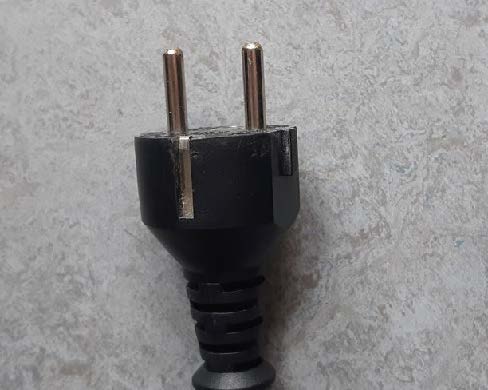
If mobility is to be based on electrification, then urgent actions should be taken not only to exert pressure on consumers to acquire an electric vehicle and increase the charging network, but also to recycle metals from batteries and evaluate the evolution of their expected global demand. A recent study carried out by Bruno and Fiore (2024) indicated that if the recycling efficiencies of the technologies applied at full scale are high, European recycling plants could supply only 2%-wt of those required for European lithium-battery production in 2030 as recycled metals. Therefore, unless the metals supply chain (lithium, cobalt, manganese, nickel, among others) is clear and there is a significant decrease in the amount of metals demanded for producing batteries, the rush for electrifying has a severe risk of inducing a material crisis.
Electrification may be considered an excellent solution for some specific city configurations, along with intensive public transport. Crowded cities may benefit from reducing the number of circulating vehicles and eliminating dispersed emissions in the city centre. However, this type of mobility does not perfectly fit all types of city configurations. The high demand for living solutions forces many inhabitants to move away from the city centre, thus also forcing them to travel several kilometres daily, which are better covered by a combustion vehicle. Small and mid-size cities do not have a good transport network due to the low population density, resulting much more economical and efficient (with regard to the management of public funds) for citizens to have their own vehicle. Depending on the number of kilometres yearly travelled (urban or intercity) and the distance involved, the EV may be an excellent solution for some people, but completely inadequate for others. Figure 9 shows a free electric recharger for vehicles.
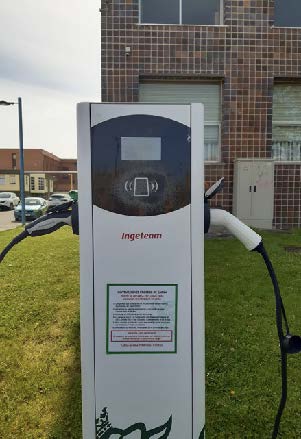
Other factors are also important in making the final decision for acquiring an EV. Creating an adequate charging infrastructure is one of them, and it is essential to increase EV use and reduce “range anxiety.” However, creating a robust charging infrastructure is a complex issue requiring strong intraand inter-sectoral partnerships for satisfactory deployment (Galán & Zúñiga-Vicente, 2023). Some other factors include the availability of installing a car recharging point in their own house, which is not always possible for many citizens who lack a garage. The price of the vehicle and the feasibility of traveling during vacation periods without suffering from long waiting hours due to overcrowded recharging stations are also relevant factors to be considered. Others, no less important, are the uncertainty regarding a failure of the battery system once the vehicle warrant is over and the price of the vehicle if sold in the second-hand market.
EVs belong to a rapidly evolving technological sector, in which advancements are occurring at a fast pace. This not only enhances efficiency and reliability, but also leads to a decrease in the prices of new EVs over time, directly impacting the second-hand market. Consequently, the risk of purchasing a new EV and experiencing a significantly higher depreciation than that of combustion vehicles is a valid concern. This is why renting an EV might be a more prudent choice than outright ownership. The flexibility attained by the combination of thermal and electric engine is decanting the balances for this latter option. Figure 10 shows a PHEV using a free recharging point.
The study performed by Higueras-Castillo et al. (2020) indicated that customers most likely to purchase an EV in Spain are female customers, young people and high-income consumers with a great moral perception regarding GHG emission reduction. Without disregarding the other factors, income is also a major barrier to owning an EV. If the average age of the Spanish car fleet is considered (13.5 years), this translates into many car owners having vehicles with an age greater than 14 years. In fact, data from the Spanish second-hand car market indicate that 40.3% of these transactions are concentrated in models older than 15 years, which reflects the economic difficulties that the average citizen has in accessing efficient mobility solutions (Baranova, 2024). Thus, it will not be easy for EVs to penetrate the market if a great perFigure 9. Recharging station available in parking lot. Single point in a parking area of 500 m2. centage of customers need to keep their vehicles running for more than 10 years and expect to obtain a benefit after selling them in the second-hand market.
Another major issue is the implicit “sustainability” of replacing combustion vehicles capable of high durability for a fleet of electric ones having an expected lower service life. The study carried out by Verma, et al. (2022) indicated that the deployment of EVs may aid in reducing GHG emissions. However, there is also an increase in the human toxicity level due to the larger use of metals, chemicals, and energy for the production of powertrain, and high voltage batteries. Therefore, with the widespread use of EVs, there may be a risk of translating pollution problems from developed countries to those with lower incomes.
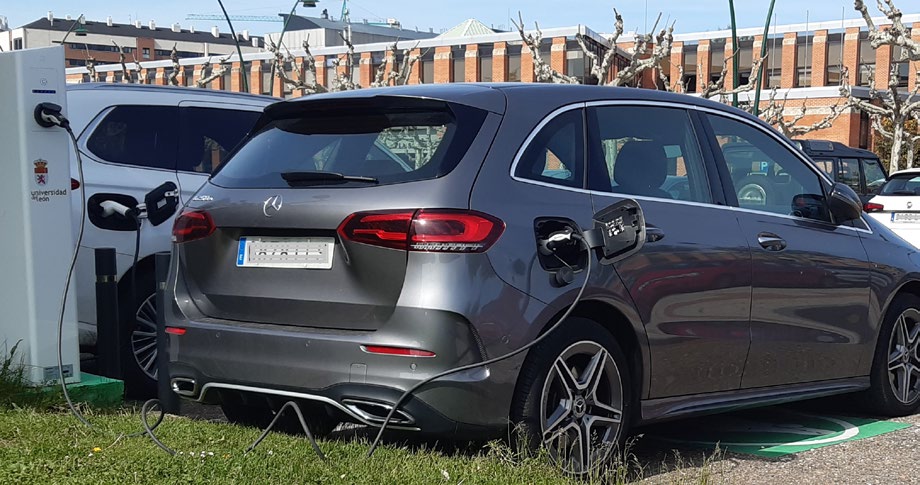
If electrification and decarbonization of the transport sector are the goals, one major challenge that needs to be overcome is the amount and type of raw materials currently needed for batteries and the recycling networks. Unless these subjects are seriously handled, it seems unreasonable to consider that electrification would be the single solution to mitigate global warming potential since many car manufacturers may be located in countries with an energy mix based on non-renewable fuels and metal components needed for batteries may have an inherent risk of creating an environmental crisis due to intensive mining and inadequate recycling. Lithium contamination is a real concern due to the mobility of this cation in soil, which can leak into groundwater or can be transported with surface water runoff. Plants uptake lithium from the soil and experience an accumulating effect, creating a risk for lithium reaching the food chain (Gupta, et al., 2024).
Conclusions
The current car manufacturing sector is experiencing an exciting transformation, but it is also suffering from the uncertainty associated with the strict changes in regulation to reach the goal of decarbonizing the economy. There is a significant concern regarding the impact of GHG emissions and expected modifications in local climatic conditions, which urges society to find technological solutions capable of maintaining welfare and mitigating the environmental impact of human activities. However, it must be clear that solutions must be global and consider all variables and parameters of the equations rather than focalizing on small regions with specific characteristics that are not extrapolated to other urban areas. EVs are an excellent mobility solution for some population sectors under specific city configurations and population densities. Still, they are far from being considered an adequate global solution and they are not even suitable for many low-populated European cities.
Great efforts have been made to reduce fuel consumption in the car fleet, reduce pollutant emissions, and increase safety driving measures. The wide spread of current gasoline and diesel technology already offers a great advancement in reducing carbon emissions. To this, the presence of mild hybrid vehicles should be added, capable of reducing even more fuel consumption and serving as a bridge for preparing the industry for the technological transition.
Many changes are necessary to attain economic decarbonization. These changes are costly and require severe modifications in infrastructure. The electrification of the car fleet is a reality, but accelerating this transition without considering all relevant factors may seem a serious mistake. Availability of raw materials, environmental impact of mining activities, recycling of batteries, and pollution-associated problems, along with the energy demanded in EV manufacturing and use, and where this energy comes from, when industrial plants are located in countries where electricity is produced mainly from fossil sources, are just some of the facts that should be assessed if attempting this technological transition.
References
ACEA. 2023. Average age of the EU vehicle fleet, by country. Disponible en: https://www.acea.auto/ figure/average-age-of-eu-vehicle-fleet-by-country/#:~:text=- The%20newest%20passenger%20 cars%20can,old%20in%20the%20 European%20Union (consultado el 15 de febrero de 2024).
ANFAC. La antigüedad del parque de automóviles en España sigue al alza y alcanza los 13,5 años de edad media. Disponible en: https://anfac. com/actualidad/la-antiguedad-delparque-de-automoviles-en-espana-sigue-al-alza-y-alcanza-los-135- anos-de-edad-media/ (consultado el 1 de febrero de 2024).
Audi. https://www.audi-technology-portal.de/en/drivetrain/engine-efficiency-technologies/fsi-tfsi-principle (consultado el 13 de febrero de 2024).
Ayodhya, A.S., Narayanappa, K.G. (2018). An overview of after-treatment systems for diesel engines. Environmental Science and Pollution Research, 25, 35034-35047. https:// doi.org/10.1007/s11356-018-3487-8.
Baranova, M. 2024. El mercado de ocasión creció un 2,6% en 2023. Disponible en: https://neomotor.epe.es/ industria/el-mercado-de-ocasioncrecio-un-26-en-2023-JH1669568 (consultado el 6 de marzo de 2024).
Baykara, C., Kutlar, O. A., Dogru, B., Arslan, H. (2017). Skip cycle method with a valve-control mechanism for spark ignition engines. Energy conversion and management, 146, 134-146.
Bruno, M., Fiore, S. (2024). Review of lithium-ion batteries’ supply-chain in Europe: Material flow analysis and environmental assessment. Journal of Environmental Management, 358, 120758. https://doi. org/10.1016/j.jenvman.2024.120758.
Campos-Fernández, J., Arnal, J. M., Gómez, J., Dorado, M.P. (2012). A comparison of performance of higher alcohols/diesel fuel blends in a diesel engine. Applied Energy, 95, 267-275. https://doi.org/10.1016/j. apenergy.2012.02.051.
Carwow. Precio y opinión del Toyota RAV4. Disponible en: https://www. carwow.es/toyota/rav4#gref (consultado el 26 de febrero de 2024).
Castellanamotor. https://www.castellanamotor.es/seat/gama-hibrida (consultado el 17 de febrero de 2024).
Clifford, J. 2015. Why does Toyota use Atkinson cycle engines? Disponible en: https://mag.toyota.co.uk/ toyota-use-atkinson-cycle-engines/ (consultado el 21 de febrero de 2024).
Crosse, J. (2019). Under the skin: Why diesel engines will always be more efficient than petrol. Why Are Diesel Engines More Reliable Than Gasoline Engines? Disponible en: https://www.autocar.co.uk/opinion/technology/under-skin-whydiesel-engines-will-always-be-more-efficient-petrol (consultado el 3 de febrero de 2024).
Couto, J. 2023. Seat deja de vender los motores de GNC. Disponible en: https://www.autofacil.es/seat/ seat-deja-motores-gnc/610271.html (consultado el 17 de febrero de 2024).
Dacia. https://www.dacia.es/dacia-glp/ gasolineras.html (consultado el 21 de febrero de 2024).
De Miguel, C. 2023. El mercado de coches de segunda mano duplicará este año al de nuevos. Disponible en: https://www.larazon.es/ economia/mercado-coches-segunda-mano-duplicara-este-ano-nuevos_2023121165766e160ec7c80001d0af88.html (consultado el 15 de febrero de 2024).
Dover Fueling Solutions. 2023. Hydrogen vs CNG vs LNG vs EV. Which is the Right Future Fuel For You? Disponible en: https://www. doverfuelingsolutions.com/thoughtleadership/hydrogen-vs-cng-vslng-vs-ev.-which-is-the-right-future-fuel-for-you%3F (consultado el 19 de febrero de 2024).
Eilts, P., Stoeber-Schmidt, C.P., Wolf, R. (2013). Investigation of extreme mean effective and maximum cylinder pressures in a passenger car diesel engine (No. 2013-01-1622). SAE Technical Paper. https://doi. org/10.4271/2013-01-1622.
Euro 7: MEPs back new rules to reduce road transport emissions. Press release. Disponible en: https:// www.europarl.europa.eu/news/en/ press-room/20231009IPR06746/ euro-7-meps-back-new-rules-toreduce-road-transport-emissions (consultado el 1 de febrero de 2024).
Eurodiesel. Modern Common Rail Injection Systems. 2019. https://www. eurodiesel.com/blog/uncategorized/modern-common-rail-injection-systems (consultado el 11 de febrero de 2024).
European Commission. 2050 longterm strategy Striving to become the world’s first climate-neutral continent by 2050. Disponible en: https://climate.ec.europa.eu/ eu-action/climate-strategies-targets/2050-long-term-strate – gy_en#:~:text=The%20EU%20 aims%20to%20be,to%20the%20 European%20Climate%20Law%20 (consultado el 4 de marzo de 2024).
Fridrichová, K., Drápal, L., Vopa il, J., & Dlugoš, J. (2021). Overview of the potential and limitations of cylinder deactivation. Renewable and Sustainable Energy Reviews, 146, 111196. https://doi.org/10.1016/j. rser.2021.111196.
Galan, J.I., Zuñiga-Vicente, J.A. (2023). Discovering the key factors behind multi-stakeholder partnerships for contributing to the achievement of sustainable development goals: Insights around the electric vehicle in Spain. Corporate Social Responsibility and Environmental Management, 30(2), 829-845. https://doi. org/10.1002/csr.2391.
Gemelli, F. 2023. Mazda CX-30 mild hybrid 2023, prueba de consumo real. Disponible en: https://es.motor1. com/reviews/689637/prueba-consumo-real-mazda-cx30-mild-hybrid/ (consultado el 13 de febrero de 2024).
Gemelli, F. 2024. Hyundai KONA mild hybrid 2024: prueba de consumo real. Disponible en: https://es.motor1.com/reviews/707480/hyundai-kona-hybrid-prueba-consumo/ (consultado el 13 de febrero de 2024).
Goldasz, S. 2016. Best three-cylinder engines. Disponible en: https://www.carkeys.co.uk/guides/ best-three-cylinder-engines (consultado el 13 de febrero de 2024).
González, R., & Gómez, X. (2024). Ammonia Can be Currently Considered as one of the Best Green Energy Allies. https://www.preprints.org/ manuscript/202403.0737/v1.
Guan, B., Zhan, R., Lin, H., Huang, Z. (2015). Review of the stateof-the-art of exhaust particulate filter technology in internal combustion engines. Journal of Environmental Management, 154, 225-258. https://doi.org/10.1016/j. jenvman.2015.02.027.
Gupta, D. K., Iyer, A., Mitra, A., Chatterjee, S., & Murugan, S. (2024). From Power to Plants: Unveiling the Environmental Footprint of Lithium Batteries.
Gutierrez, D. 2023. Híbrido enchufable y diésel, la extraña combinación que todavía le funciona a un fabricante alemán. Disponible en: https://www.hibridosyelectricos. com/coches/mercedes-benz-hibrido-enchufable-diesel-extrana-combinacion-que-todavia-funciona_66581_102.html (consultado el 2 de marzo de 2024).
Higueras-Castillo, E., Molinillo, S., Coca-Stefaniak, J.A., Liébana-Cabanillas, F. Potential Early Adopters of Hybrid and Electric Vehicles in Spain—Towards a Customer Profile. Sustainability 2020, 12, 4345. https://doi.org/10.3390/su12114345.
Houghtlen, M. (2019). Disponible en: https://www.motorbiscuit.com/ why-do-diesel-engines-last-longer-than-gasoline-engines/ (consultado el 5 de febrero de 2024).
Hu, K., Chen, Y. Technological growth of fuel efficiency in European automobile market 1975-2015. Energy Policy. 2016; 98:142-148.
Hydrogen Fuel Cell Partnership. Costs and financing. Disponible en: https://h2stationmaps.com/ costs-and-financing#:~:text=Stations%20that%20use%20hydrogen%20delivered,design%2C%20 construction%2C%20and%20commissioning (Consulta el 19 de febrero de 2024).
IEA. Does household use of solid biomass-based heating affect air quality? 2018. Disponible en: https:// www.iea.org/articles/does-household-use-of-solid-biomass-basedheating-affect-air-quality (consultado el 9 de febrero de 2024).
Iwamoto, Y., Noma, K., Nakayama, O., Yamauchi, T., Ando, H. (1997). Development of gasoline direct injection engine. SAE transactions, 777-793.
Kim, C. H., Schmid, M., Schmieg, S. J., Tan, J., Li, W. (2011). The effect of Pt-Pd ratio on oxidation catalysts under simulated diesel exhaust (No. 2011-01-1134). SAE Technical Paper.
Kristensen, S. 2022. A Detailed History of the Common Rail Injection System. Disponible en: https://techhistorian.com/detailed-history-commo n-r a i l-i nje c t io n- s y s t e m / (consultado el 11 de febrero de 2024).
Küpper, K., Linsel, J., Pingen, B., & Weber, C. Cylinder deactivation for three-cylinder engines. MTZ worldwide. 2016;77(12):46-51.
Lacort, J., de la Torre, A. 2023. No es tu impresión: los precios de los coches se han disparado en los últimos años. Y tenemos los datos que lo demuestran. Disponible en: https://www. xataka.com/movilidad/no-tu-impresion-precios-coches-se-han-disparado-ultimos-anos-tenemos-datos-que-demuestran (consultado el 9 de febrero de 2024).
Liang, X., Zheng, Z., Zhang, H., Wang, Y., Yu, H. A Review of Early Injection Strategy in Premixed Combustion Engines. Appl. Sci. 2019, 9, 3737. https://doi.org/10.3390/ app9183737
Liu, A., Shangguan, B., Lv, P., Ahmed, W., Zhu, W. (2016). A study on optimization method of a powertrain mounting system with a three-cylinder engine. Proceedings of the Institution of Mechanical Engineers, Part C: Journal of Mechanical Engineering Science. https:// doi.org/10.1177/0954406216631004.
Liuhanzi, Y., Franco, V., Campestrini, A., German, J., Mock, P. 2015. NOX control technologies for Euro 6 Diesel passenger cars. Market penetration and experimental performance assessment. Disponible en: https://theicct.org/sites/default/files/publications/ICCT_NOx-control-tech_revised%2009152015.pdf (consultado el 7 de febrero de 2024).
Lopez-Redondo, N. 2024. Los coches eléctricos y los híbridos enchufables más vendidos en enero. Disponible en: https://movilidadelectrica.com/ coches-electricos-hibridos-enchufables-mas-vendidos-enero-2024/ (consultado el 24 de febrero de 2024).
Markville Toyota. How Hybrids Work. Drive the same way. Disponible en: https://www.markville.com/electrified-vehicles/how-hybrids-work/ (consultado el 24 de febrero de 2024). Mazda. https://www.mazda.com/en/ innovation/mazda-stories/engineers/skyactiv-x/#:~:text=The%20 SKYACTIV%2DX%20engine%20 uses,completely%20than%20in%20 conventional%20engines (consultado el 11 de febrero de 2024).
Mazda. https://www.mazda.es/gama/ mazda-mx-30/ (consultado el 4 de marzo de 2024).
Mendoza, I. 2023. Cómo se convierte un coche a GLP, cuánto cuesta y qué ventajas tiene más allá de la etiqueta ECO. Disponible en: https:// www.motorpasion.com/revision/ convertir-coche-gasolina-glp-precio-ventajas-inconvenientes (consultado el 19 de febrero de 2024).
Mercedes. GLC 200 4Matic. Disponible en: https://www.mercedes-benz.es/passengercars/mercedes-benz-cars/car-configurator. html/motorization/CCci/ES/es/ GLC-KLASSE/OFFROADER (consultado el 2 de marzo de 2024).
Ministerio para la transición ecológica y el reto demográfico. Directrices para la creación de zonas de bajas emisiones (ZBE). Disponible en: https://www.miteco.gob.es/content/ dam/miteco/es/calidad-y-evaluacion-ambiental/publicaciones/directricesparalacreaciondezonasdebajasemisiones_tcm30-533017.pdf (consultado el 3 de febrero de 2024).
Miyoshi, N., Matsumoto, S. I., Katoh, K., Tanaka, T., Harada, J., Takahashi, N., and Kasahara, K. (1995). Development of new concept threeway catalyst for automotive leanburn engines (no. 950809). SAE technical paper.
Nett Technologies INC. https://www. nettinc.com/information/emissions-faq/what-is-a-diesel-oxidation-catalyst (consultado el 7 de febrero de 2024).
Network, global fleet the executive: Wikifleet. Disponible en: https://www. globalfleet.com/en/wikifleet (consultado el 15 de febrero de 2024).
Nissan. Tecnología carros nissan e-power vs tecnología de carros híbridos convencionales ¿cuál te conviene más? Disponible en: https://www.nissan.com.co/noticias/2023/tecnologia-carros-nissan-e-power-vs-carros-hibridos. html#:~:text=Los%20carros%20 h%C3%ADbridos%20convencionales%20suelen,la%20incre%C3%ADble%20tecnolog%C3%ADa%20 e%2DPower%3F (consultado el 24 de febrero de 2024).
Ortiz-Soto, E., Wolk, B., Chen, H., and Younkins, M., “mDSF: Improved Fuel Efficiency, Drivability and Vibrations via Dynamic Skip Fire and Miller Cycle Synergies,” SAE Technical Paper 2019- 01-0227, 2019, doi:10.4271/2019- 01-0227. Disponible en: https:// www.tulatech.com/wp-content/ uploads/2021/05/2019-01-0227- mDSF-Improved-Fuel-EfficiencyDrivability-and-Vibrations-ViaDynamic-Skip-Fire-and-MillerCycle-Synergies-Publication.pdf.
Raymunt, M. 2023. No one wants used EVs, making new ones a tougher sell too. Disponible en: https://www.japantimes.co.jp/business/2023/12/25/tech/used-evstough-sell-market/ (consultado el 24 de febrero de 2024).
Real Decreto 266/2021, de 13 de abril, por el que se aprueba la concesión directa de ayudas a las comunidades autónomas y a las ciudades de Ceuta y Melilla para la ejecución de programas de incentivos ligados a la movilidad eléctrica (MOVES III) en el marco del Plan de Recuperación, Transformación y Resiliencia Europeo.
Repsol. https://www.repsol.es/particulares/vehiculos/estaciones-de-servicio/productos/autogas/ (consultado el 19 de febrero de 2024).
Skoda. https://www.skoda.es/quiero-un-skoda/nuevo-octavia-gtec (consultado el 17 de febrero de 2024).
Toyota. https://www.toyota.es/coches/rav4 (consultado el 26 de febrero de 2024).
Tragakis, C.J. 2024. Everything you need to know about ford’s Ecoboost engines. Disponible en: https:// www.cjponyparts.com/resources/ what-is-ecoboost#:~:text=The%20 first%20EcoBoost%20motors%20 were,a%20pioneer%20at%20 the%20time (consultado el 13 de febrero de 2024).
Valvoline. https://www.valvolineglobal. com/en-eur/everything-about-diesel-particulate-filters/ (consultado el 5 de febrero de 2024).
Verma, S., Dwivedi, G., Verma, P. (2022). Life cycle assessment of electric vehicles in comparison to combustion engine vehicles: A review. Materials Today: Proceedings, 49, 217-222. https://doi.org/10.1016/j. matpr.2021.01.666.
Wayland, M. 2023. Why automakers are turning to hybrids in the middle of the industry’s EV transition. Disponible en: https:// www.cnbc.com/2023/12/08/automakers-turn-to-hybrids-ev-transition.html (consultado el 24 de febrero de 2024).
Weitekamp, C. A., Kerr, L. B., Dishaw, L., Nichols, J., Lein, M., & Stewart, M. J. A systematic review of the health effects associated with the inhalation of particle-filtered and whole diesel exhaust. Inhalation toxicology, 2020;32(1):1-13.
Yoshikawa, T., Reitz, R. D., Luff, D. C., Law, T., Shayler, P. J., & Pegg, I. Development of an Improved NOx Reaction Mechanism for Low Temperature Diesel Combustion Modeling. SAE International Journal of Engines. 2009;1(1):1105-17. https:// doi.org/26308343.


